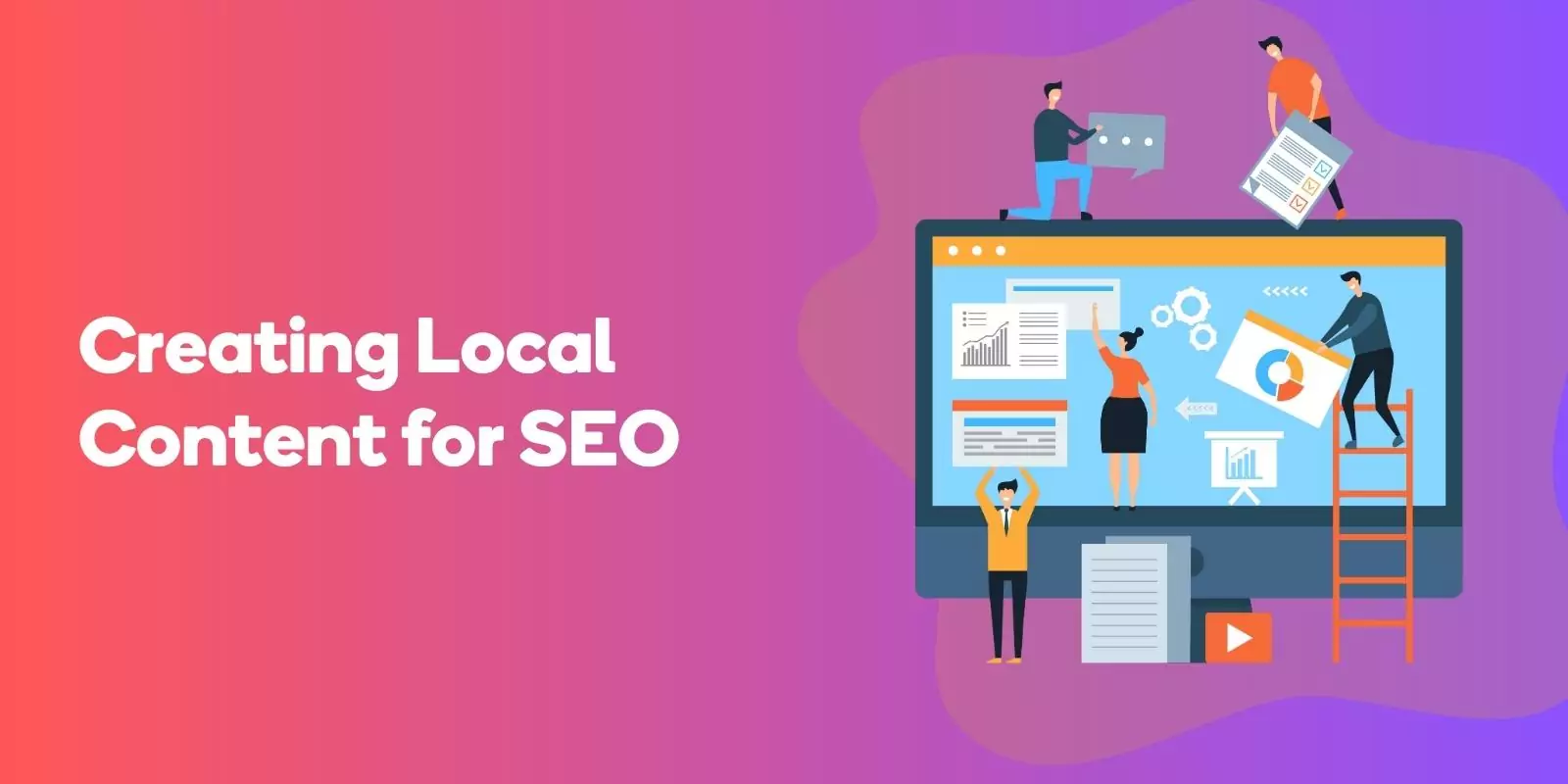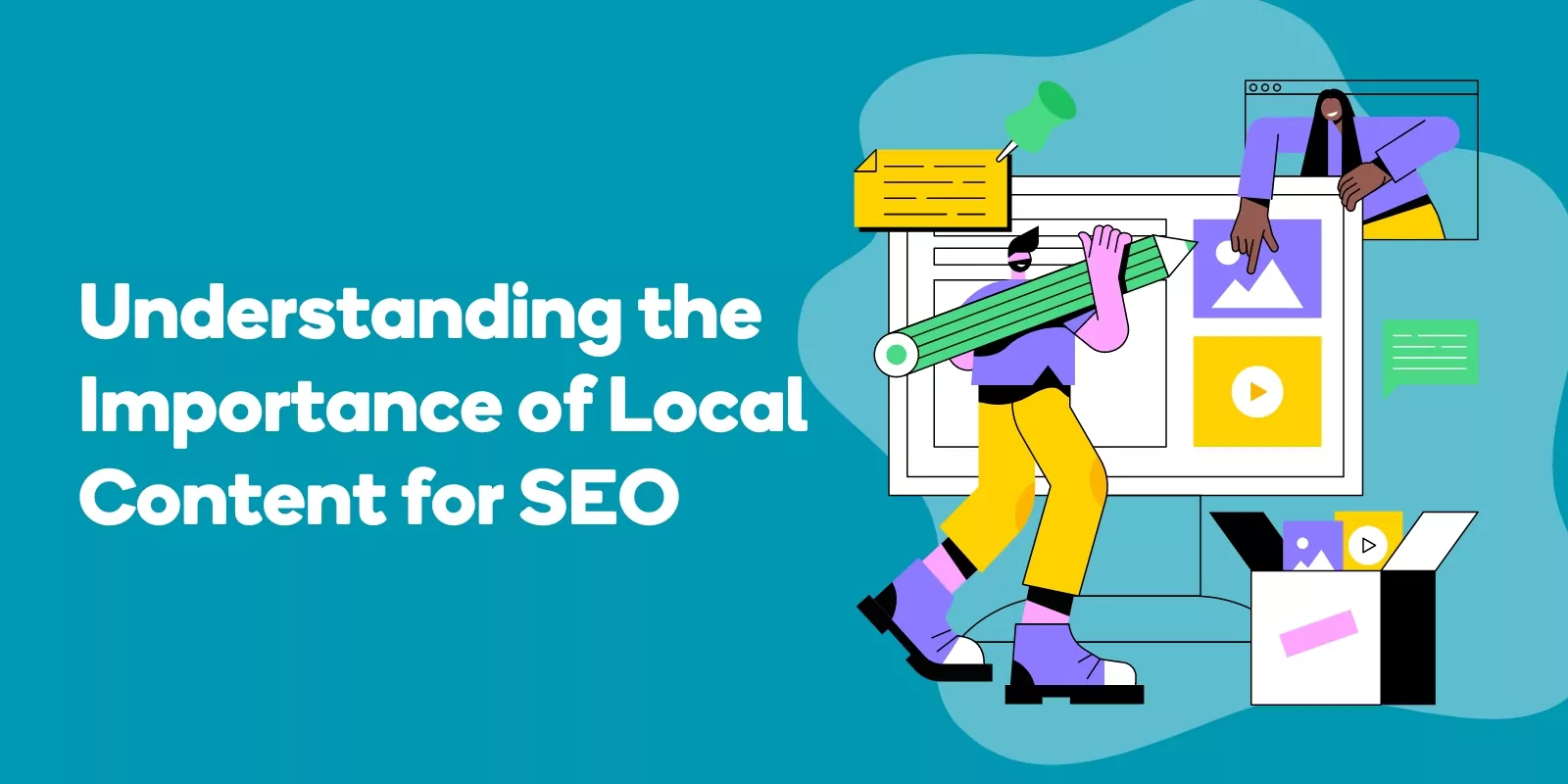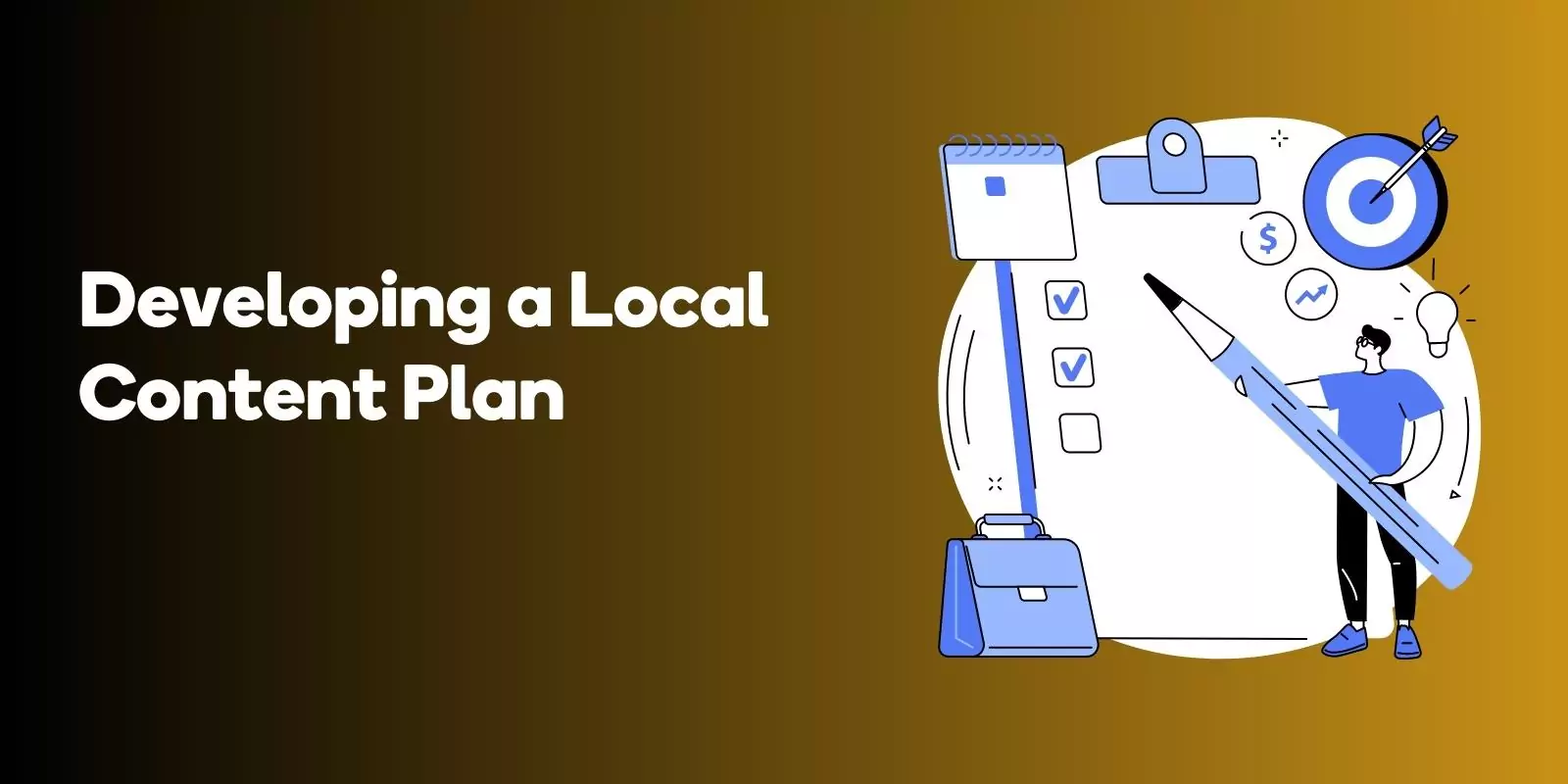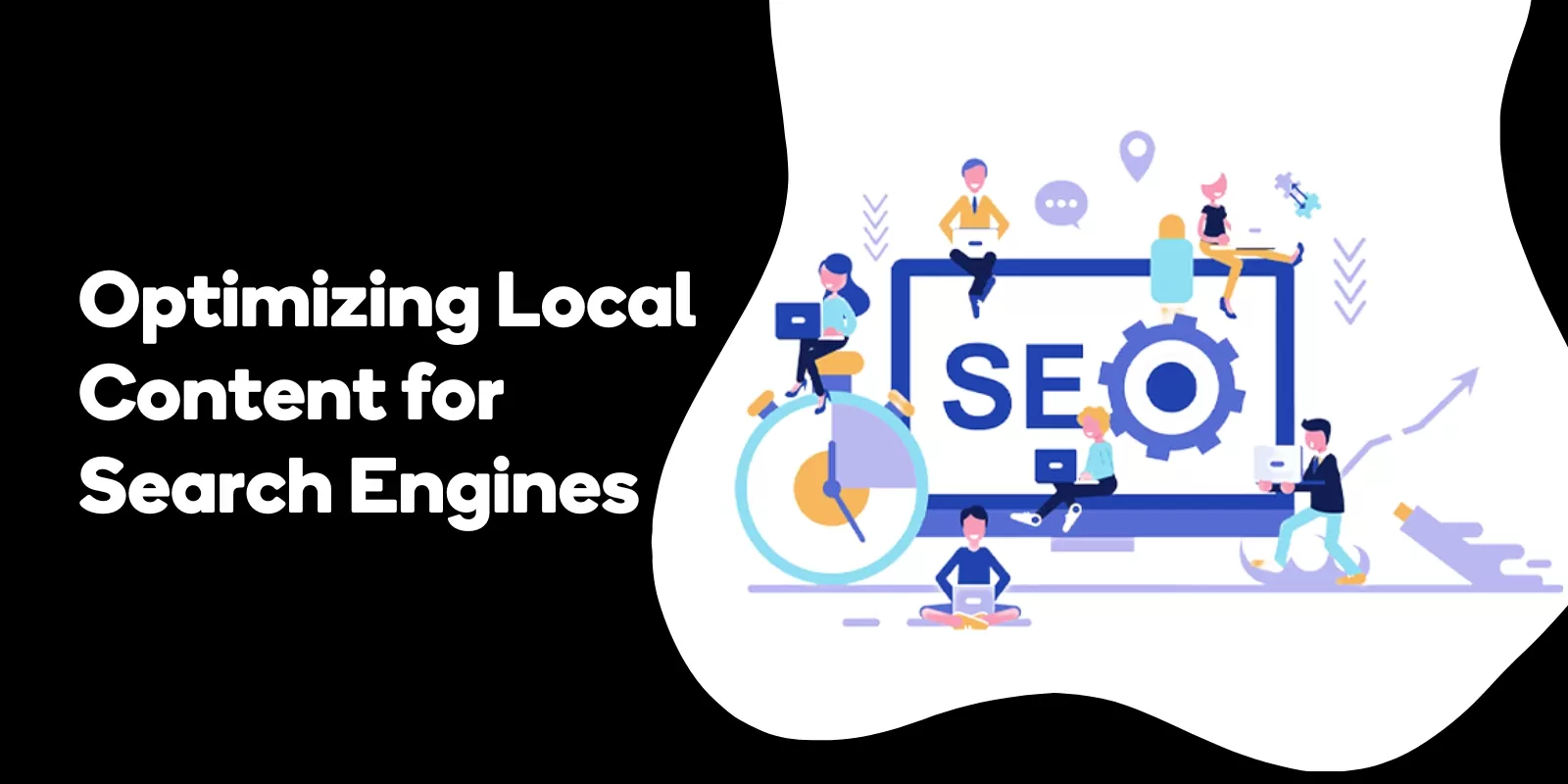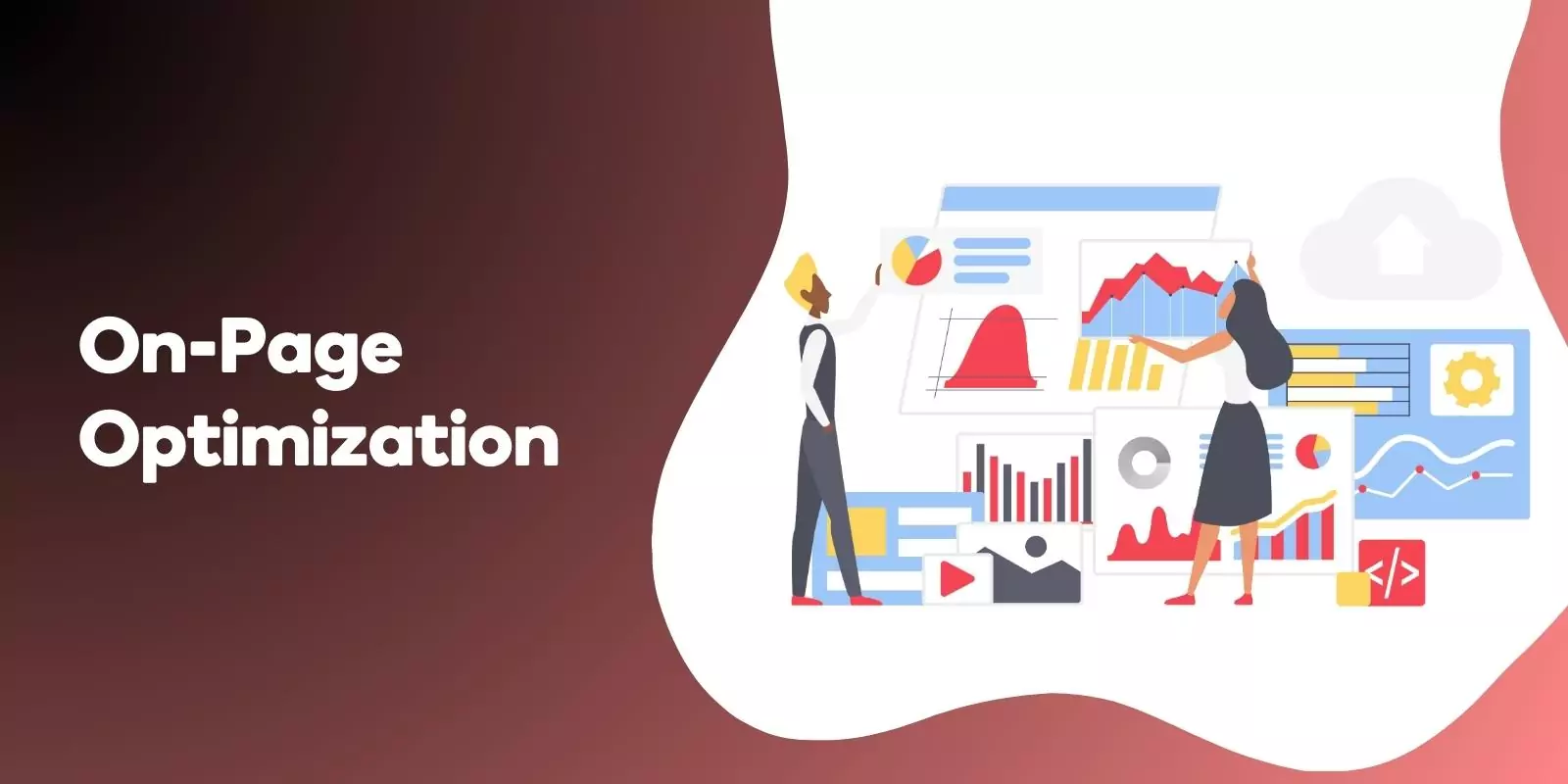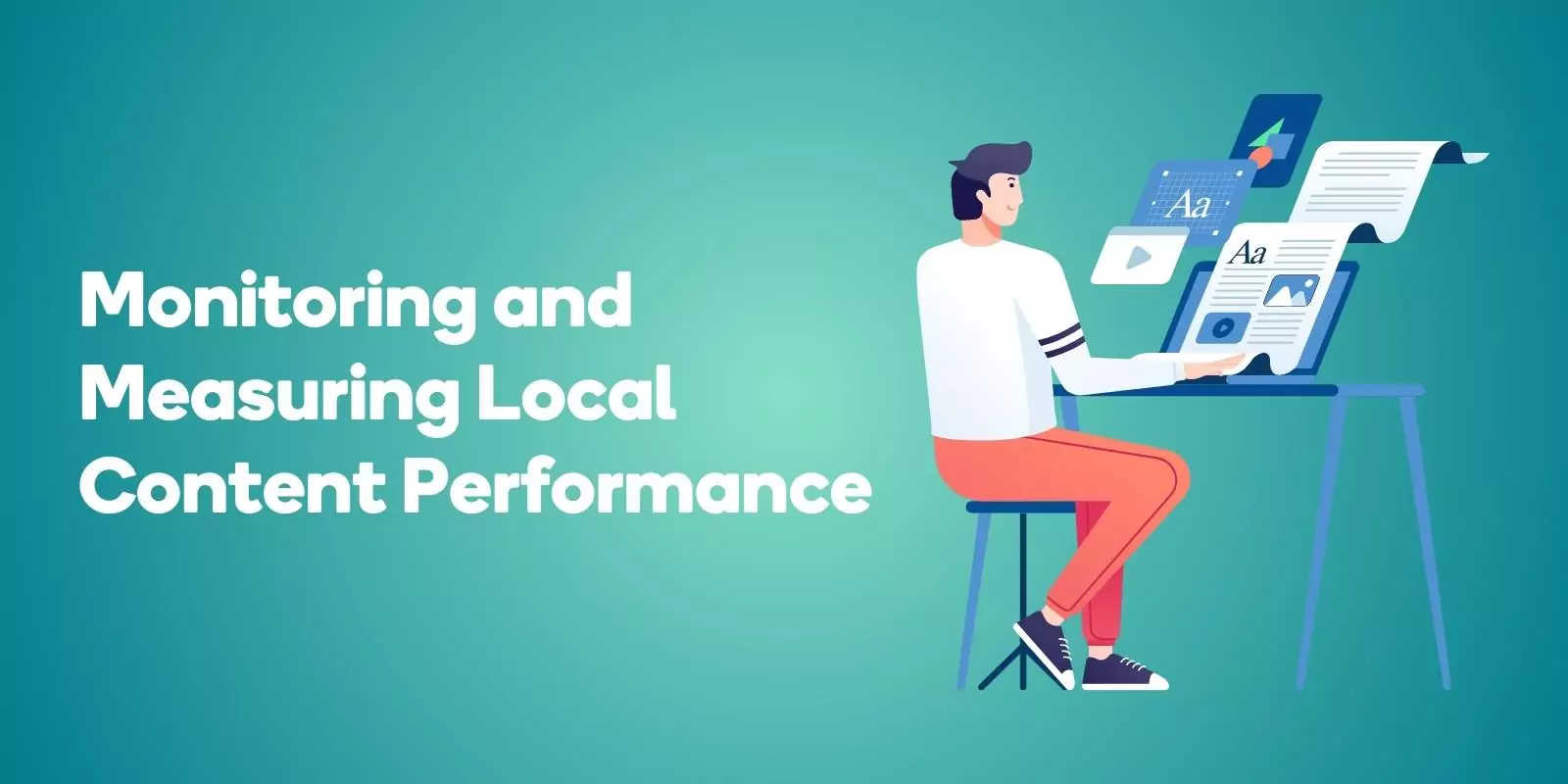In this blog post, we present “Creating Local Content for SEO: A Guide for Businesses” that will guide you through the process of creating compelling local content, optimizing it for search engines, and leveraging local events and partnerships to boost your local SEO efforts.
We’ll cover everything from understanding the importance of local content for SEO, developing a local content plan, optimizing your content for search engines, leveraging local events and partnerships, encouraging user-generated content and reviews, and finally monitoring and measuring your local content performance.
By the end of this blog post, you’ll have the tools and knowledge to create a successful local content strategy that will drive more traffic, leads, and sales to your business, as outlined in “Creating Local Content for SEO: A Guide for Businesses.”
Understanding the Importance of Local Content for SEO
In today’s competitive digital landscape, it’s crucial for small businesses to make their online presence felt.
Local content plays a vital role in achieving this, as it helps businesses connect with their specific local audience, improving visibility, customer engagement, and reputation in the local market.
By implementing effective local SEO strategies, businesses can improve their search engine rankings and attract more potential customers to their physical location.
Optimizing your content for search engines is essential in increasing your search engine rankings and visibility.
With 30% of mobile searches related to location and 76% of local searches leading to a phone call, it’s more important than ever to optimize your website for mobile devices.
In this context, local content becomes a vital part of your overall SEO strategy, helping you attract a targeted local audience and generate long-term revenue growth.
Benefits of Local Content
Creating local content offers a plethora of benefits for businesses. By developing content that is specifically tailored to your local audience, you can increase your visibility, heighten customer engagement, and establish yourself as an authority in the local market.
Additionally, local content helps businesses build trust with their audience, as it demonstrates that you understand and cater to their unique needs and preferences.
Constructing citations, such as submitting business information to local online directories, and capitalizing on local events and partnerships, can help you increase your online visibility in search results.
This is especially important for local businesses, as actively managing the accuracy of these sources can enhance the trustworthiness of your online listings and boost your rankings in search engine results pages.
Role of Local Content in SEO Strategy
Local content is an integral part of your overall SEO strategy, as it bolsters other local SEO initiatives and helps you build your local search visibility.
One of the first things you should do when starting with local SEO is to create a Google Listing profile, a free SEO tool that allows you to control how your business appears in local search results. By optimizing your Google Business Listing profile with accurate name, address, and phone number (NAP) information, photos, and reviews, you can enhance your online presence and attract more local customers.
Incorporating location pages on your website is another crucial aspect of local SEO strategy. These pages provide your contact information, store hours, individual store descriptions, parking/transit details, promotions, and customer testimonials.
By featuring your NAP prominently on your website’s footer or header and on a dedicated “Contact Us” page, you can ensure that search engines and potential customers can easily find and connect with your business.
Developing a Local Content Plan
Developing a local content plan is an essential step in creating an effective local SEO strategy.
A well-crafted plan will help you identify your target audience, research and select the most relevant local keywords, and choose appropriate content types and formats to attract and engage your local customers.
By aligning your content plan with your business goals, you can ensure that your local content efforts produce tangible results and contribute to your overall success.
To create an effective local content plan, it’s crucial to consider the unique needs and preferences of your target audience.
Researching your local market, understanding your customers’ pain points, and identifying local trends can help you create content that resonates with your audience and drives conversions.
Additionally, incorporating local keywords in your content can help you rank higher in search engine results and attract more potential customers to your business.
Identifying Target Audience and Keywords
Keyword research is a critical component of local SEO, as it helps you uncover the specific phrases and terms that your target audience uses to find businesses, products, and services similar to yours.
Conducting local keyword research involves identifying keywords that are relevant to your business offerings and have a strong potential to drive traffic and in-person visits.
By targeting the right local keywords, you can improve your visibility in search engine results and connect with customers who are actively searching for your products or services.
To identify your target audience and keywords for local content, it’s essential to conduct thorough research and gain insights into your audience’s needs and preferences.
This may involve analyzing your competitors’ content, exploring local trends, and seeking feedback from your existing customers. By understanding your audience’s needs and preferences, you can create content that resonates with them and drives engagement and conversions.
Content Types and Formats
The types of content and formats you choose for your local SEO efforts can have a significant impact on your success.
Depending on your target audience and the keywords you’ve identified, various content types and formats can be effective in engaging your local customers.
Some popular content formats for local SEO include city-specific or regional landing pages, FAQ pages, specials, testimonials, blog posts, long-form content, case studies, ebooks, infographics, videos, lists, and guides.
The key to selecting the right content types and formats for your local content strategy is to understand your audience and their preferences. By analyzing your audience’s needs, you can create content that is engaging, informative, and helpful, ultimately driving more traffic, leads, and sales to your business.
The ultimate takeaway is that you should evaluate the most appropriate content types and formats for local SEO, such as blog posts, videos, infographics, and case studies, when developing local content for SEO.
Optimizing Local Content for Search Engines
Optimizing your local content for search engines is crucial to enhancing your local search engine optimization rankings and visibility.
By incorporating local keywords, optimizing your website’s structure, and using Schema markup, you can improve your chances of ranking higher in local search results and attracting more potential customers to your business.
Moreover, optimizing your local content can help you stay ahead of your competitors and ensure that your business is easily discoverable by customers searching for products or services in your area.
In addition to optimizing your content for local keywords, it’s essential to focus on on-page optimization and incorporating local schema markup to help search engines understand and index your content better for local listings.
By following best practices for on-page optimization and schema markup, you can significantly improve your local SEO efforts and increase your online visibility.
On-Page Optimization
On-page optimization is the process of optimizing individual web pages to increase their visibility in search engine results and generate more relevant traffic.
This involves optimizing a page’s content, tags, and internal links to ensure that the content is both pertinent and provides a positive user experience.
By following best practices for on-page optimization, such as optimizing title tags, meta descriptions, headers, and URLs with local keywords and geographic terms, you can enhance your local SEO efforts and attract more local customers to your business.
To optimize your local content on-page, it’s crucial to focus on the user experience and create content that is engaging, informative, and helpful.
This may involve incorporating multimedia elements, such as images, videos, and infographics, to make your content more visually appealing and engaging for your audience.
Additionally, optimizing your website’s structure and internal linking can help search engines crawl and index your content more effectively, ultimately improving your search engine rankings and visibility.
Incorporating Local Schema Markup
Local schema markup is a code that helps search engines understand and index local content more effectively.
By adding local schema markup to your website, you can improve your search engine rankings and visibility, and ultimately attract more local customers to your business.
Schema.org is a shared vocabulary between major search engines like Google, Bing, and Yahoo, which helps them better understand the content on your website and provide more accurate search results.
To incorporate local schema markup on your website, you can use tools like Hall Analysis’s schema markup generator or Google’s structured data testing tool.
Once you’ve added schema markup to your website, it’s important to test it using Google’s structured data testing tool to ensure that it’s working correctly and providing the desired results.

Award-Winning
Sales Funnel & Website Expert
Ready for Revenue – Not Just “Traffic”?
- Websites that Work: Clean, fast, built to convert – no design fluff.
- Funnels that Sell for You: Step-by-step paths that turn clicks into paying customers.
- SEO That Hunts Buyers: Show up exactly when prospects reach for their wallets.
By incorporating local schema markup on your website, you can enhance your local SEO efforts and increase your local rankings and online visibility.
Leveraging Local Events and Partnerships
Creating local content isn’t just about optimizing your website – it’s also about engaging with your local community and building partnerships that can help you grow your local business further.
By participating in local events, collaborating with other local businesses, and showcasing local success stories, you can create more engaging and relevant content that resonates with your local audience.
Furthermore, leveraging local events and partnerships can help you improve your online visibility, build trust with your community, and ultimately generate more leads and sales for your business.
Some strategies for creating local content through participation in community events and partnerships include event coverage and promotion, as well as collaborating with local influencers.
By covering local events, promoting them through content, social media, and press releases, and partnering with local influencers, you can create content that is highly relevant to your local audience and helps boost your local SEO efforts.
Event Coverage and Promotion
Covering local events and promoting them through content, social media, and press releases can help you raise awareness of your business, engage with your local community, and create unique content that appeals to your target audience.
By attending local events, partnering with event organizers, and showcasing the highlights of these events on your website and social media platforms, you can showcase your commitment to your community and generate more interest in your business.
Some effective methods for event coverage and promotion include crafting content that is relevant to the local area, leveraging local influencers to advertise events, and deploying press releases to announce and promote events. By employing these tactics, you can enhance your brand’s visibility, build trust with your local community, and attract more customers to your business.
Collaborating with Local Influencers
Collaborating with local influencers and experts can be a powerful way to create engaging content and boost your credibility in your local market.
By working with local influencers, you can leverage their expertise and influence to create content that is tailored to your local audience and resonates with their needs and preferences.
In addition, partnering with local influencers can help you enhance your brand awareness, increase your credibility, and attract more customers to your business.
To identify and collaborate with local influencers, you can conduct research, use influencer marketing platforms, and leverage social media to connect with potential partners.
Once you’ve identified relevant influencers, you can explore potential collaborations, such as co-creating content, promoting each other’s products or services, or hosting joint events.
By collaborating with local influencers, you can create content that is highly relevant and engaging for your local audience, ultimately driving more traffic and conversions.
Encouraging User-Generated Content and Reviews
User-generated content (UGC) and reviews are essential for local SEO, as they help build trust with your audience and improve your search engine rankings.
In fact, customer reviews constitute 15% of the factors that influence local pack rankings, and 97% of consumers say that customer reviews affect their purchasing decisions. By encouraging your customers to leave reviews and share their experiences with your business, you can create a more authentic and trustworthy online presence.
To effectively leverage UGC and reviews for local SEO, it’s important to actively solicit customer testimonials, manage online reviews, and engage with your customers to address their concerns and feedback.
By showcasing positive customer reviews on your website and social media platforms, you can build trust with your audience, improve your online reputation, and ultimately drive more sales and conversions.
Soliciting Customer Testimonials
Collecting and showcasing customer testimonials is an effective way to build trust with your audience and improve your local SEO efforts.
To obtain customer testimonials, you can send out email surveys, recognize the appropriate times to ask, and provide an easy process for customers to leave reviews.
Additionally, it’s important to obtain permission from the customer before using their name or image in a review.
Displaying testimonials from local customers on your website and promoting them on your social media platforms can help increase your online visibility and engagement.
By showcasing real-life customer experiences and positive feedback, you can demonstrate the value of your products and services and encourage potential customers to choose your business over your competitors.
Responding to Reviews and Engaging with Customers
Managing online reviews and addressing negative feedback is crucial for maintaining a positive online reputation and fostering customer engagement.
When responding to reviews, it’s important to be composed, truthful, and transparent, to show appreciation for the reviewer’s input, and to address any issues they have mentioned.
By using personalized, friendly language and responding promptly, you can demonstrate your commitment to customer satisfaction and build trust with your audience.
In addition to the positive reviews, responding to reviews, engaging with your customers on social media platforms, and addressing their concerns and feedback, can help you foster a positive online reputation and build lasting relationships with your audience.
By actively engaging with your customers and addressing their needs, you can ensure that they have a positive experience with your business and encourage them to recommend your products or services to others.
Monitoring and Measuring Local Content Performance
Monitoring and measuring the performance of your local content is crucial for evaluating the effectiveness of your local content strategy and making data-driven improvements.
By tracking relevant key performance indicators (KPIs), such as website traffic, conversions, and search rankings, you can gain valuable insights into the success of your local content efforts and adjust your strategy accordingly.
Using analytics tools, such as Google Analytics, can help you evaluate your content performance and identify areas for improvement.
By regularly monitoring your content performance and making necessary adjustments, you can ensure that your local content strategy remains effective and continues to drive growth for your business.
Key Performance Indicators
Identifying the right KPIs for measuring local content success is essential for evaluating the effectiveness of your local content efforts and making data-driven improvements.
Some relevant KPIs for local content performance include customer acquisition cost, lifetime value of a customer, return on investment, return on advertising spend, organic clicks, organic click-through rate, impressions, and rankings/SERP position.
By tracking these KPIs, you can gain valuable insights into how your local content is performing and identify areas for improvement.
This information can help you make strategic adjustments to your local content strategy, ensuring that it remains effective and continues to drive growth for your business.
Analyzing and Adjusting Strategy
To ensure your local content strategy remains effective, it’s essential to regularly analyze your performance data and make necessary adjustments. By using analytics tools, such as Google Analytics, you can gain valuable insights into your content performance and identify areas for improvement.
When adjusting your local content strategy based on performance and market changes, consider optimizing your content for search engine optimization, capitalizing on local events and associations, and stimulating user-generated content and reviews.
By making data-driven adjustments to your local content strategy, you can ensure that it continues to drive growth and success for your business.
Frequently Asked Questions
How do I create local SEO content?
Creating local SEO content involves producing material that is relevant and useful to users in a specific geographical area.
Here’s some steps to do it:
- Understand Your Audience: Research your local audience to understand what they are interested in. What are their needs, concerns, and interests related to your business or industry?
- Keyword Research: Use tools like Google’s Keyword Planner to find local keywords. These are search terms that include your location and are likely to be used by your local audience.
- Create Quality Content: Write blog posts, articles, guides, and other content that is interesting and valuable to your local audience. This could be content about local events, local aspects of your industry, or helpful advice for people in your area.
- Use Local Keywords: Naturally incorporate your local keywords into your content. Include them in your title tags, headers, meta descriptions, and throughout the content itself.
- Include Local Information: Include your business’s name, address, and phone number (NAP) on your site, and make sure it’s consistent everywhere it appears.
What kind of content is best for SEO?
The best content for SEO is high-quality, unique, and relevant to your audience. It should answer their questions, provide valuable information, and be engaging to read. It’s also important to include relevant keywords naturally within your content. Other characteristics of good SEO content include:
- Well-Structured: Use headers and subheaders to break up your content, making it easier for readers and search engines to understand.
- Keyword-Optimized: Include keywords that your audience is searching for, but don’t overdo it. Keyword stuffing can harm your SEO.
- Fresh and Updated: Regularly update your content and create new content to keep your site fresh and engaging.
- Multimedia: Use images, videos, infographics, and other multimedia elements to engage your audience and enhance your content.
- Backlinks: Try to earn backlinks from reputable sites. This boosts your site’s authority and improves your SEO.
How can I do local SEO myself?
Doing local SEO involves several steps:
- Keyword Research: Find local keywords that your audience is likely to use when searching for your products or services.
- Optimize Your Website: Include your local keywords in your title tags, meta descriptions, headers, and content. Also, ensure your business’s name, address, and phone number (NAP) are accurately listed on your site.
- Claim Your Business Listings: Claim your business listings on online directories like Google Business Profiles, Bing Places, and Yelp. Make sure your NAP is consistent across all listings.
- Collect Reviews: Encourage happy customers to leave reviews on Google, Yelp, and other platforms. Reviews can boost your local SEO and attract more customers.
- Create Local Content: Write blog posts and articles that are relevant to your local audience, and incorporate your local keywords naturally.
What are the three pillars of local SEO?
The three pillars of local SEO are:
- Relevance: This refers to how well your website matches the intent of a user’s search. You can improve your relevance by optimizing your site with the right local keywords and creating high-quality content that meets the needs of your local audience.
- Proximity: This is the geographical distance between the user and the location of your business. You can’t control proximity, but you can ensure your business’s address is accurately listed on your website and on online directories like Google My Business.
- Prominence: This refers to how well-known your business is. You can boost your prominence by earning positive reviews.
What are the most important factors in local SEO?
Local SEO is influenced by a variety of factors, including:
- Categories, Services, Photo and Video Subjects, Attributes, and Website Topics: These elements help Google understand your business and match it to relevant local searches. Make sure these accurately represent your business and are filled out in your Google Business Profile.
-
Physical Address in City of Search: The location of your business relative to the searcher can significantly impact your visibility in local search results. If your business is located outside the city borders as perceived by Google, you might face a harder time becoming visible for searches within those borders.
Strategies to mitigate this include moving to a new location, re-optimizing your presence for less competitive terms, or strengthening your local search marketing to overcome Google’s city border bias.
- Removal of Spam Listings: Google’s index is often filled with spam listings that mislead the public and violate Google’s guidelines. Reporting these spam listings can help you move up in the local pack rankings.
Spam can include fake business names, ineligible business models, multiple listings for the same business, fictitious businesses and locations, and fake reviews.
- High Numerical Google Ratings: Your average star rating is not only a top local pack ranking factor but also a key conversion factor.
A majority of consumers (51%) say a business must have at least 4 stars for them to consider choosing it. Improving customer experiences and actively seeking reviews can help increase your rating.
- Additional Google Business Profile Categories: Once you’ve selected your most influential primary category, you have nine more chances to help Google understand your relevance to specific customer intents.
You can find inspiration for these categories from top local competitors or tools like GMBSpy Chrome extension or GMB Everywhere.
Conclusion
In conclusion, creating local content for SEO is an essential aspect of any successful online marketing strategy.
By understanding the importance of local content, developing a targeted content plan, optimizing your content for search engines, leveraging local events and partnerships, encouraging user-generated content and reviews, and monitoring and measuring your local content performance, you can drive more local traffic to, leads, and sales for your business.
So, what are you waiting for? It’s time to embrace the power of local content for SEO and start attracting more local customers to your business.
With the right local content strategy in place, you can enjoy increased visibility, customer engagement, and long-term revenue growth in your local market.
